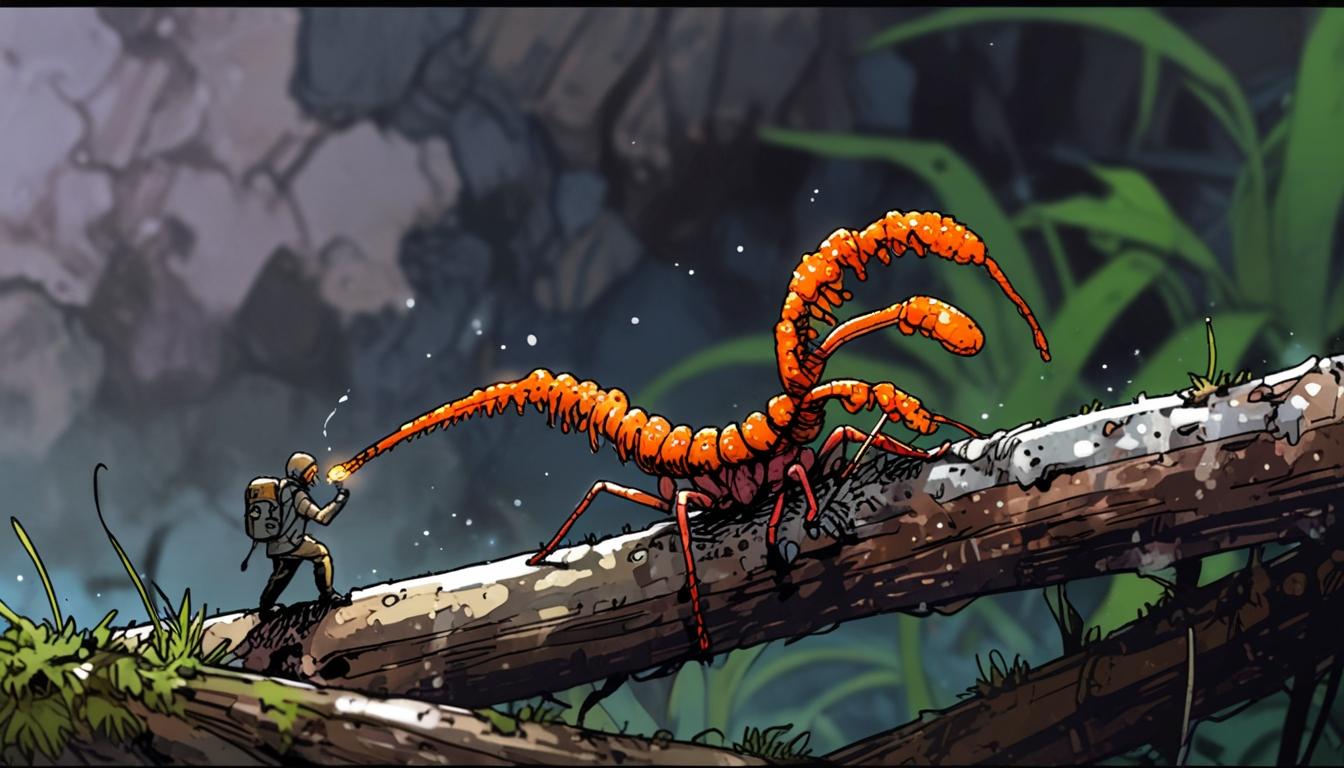While The Last Of Us paints a dramatic picture of a fungal apocalypse, experts confirm that fungal infections are a serious but often overlooked global health threat, with climate change potentially influencing their emergence.
The popular post-apocalyptic television drama series The Last Of Us, which returned for its second season on Sky Atlantic, centres on a pandemic caused by a fungal outbreak that transforms humans into aggressive, zombie-like creatures. The show’s premise, while involving significant artistic licence, draws on real scientific discussions about the potential impacts of fungi on human health.
Set in a world devastated by a mass cordyceps fungal infection, The Last Of Us follows characters played by Pedro Pascal and Bella Ramsey. In the debut episode of the first season, an epidemiologist portrayed by John Hannah warns about how environmental changes, particularly climate warming, could drive certain fungi to evolve increased pathogenicity and affect billions of people worldwide. The epidemiologist mentions fungi such as Candida, ergot, cordyceps, and aspergillus as examples capable of “burrowing into our brains and taking control” on a large scale.
While this scenario is speculative, experts highlight that fungal infections do pose genuine health risks globally. Professor Elaine Bignell, a leading researcher in human fungal pathogens, explains that numerous fungi infect people every year with serious, sometimes fatal consequences. “A number of fungal species are quite prominent pathogens and kill hundreds of thousands of people every year – it’s just the public is not well aware of this,” she told Sky News.
Several fungi included in the fictional epidemiologist’s list are recognised by the World Health Organization (WHO) as significant health threats. Aspergillus fumigatus, a common environmental mould found indoors and outdoors, can cause chronic and acute lung diseases and has a high mortality rate. Candida species contribute to blood infection in intensive care patients, and Cryptococcus neoformans causes pneumonia and meningitis primarily in immunosuppressed individuals, especially in sub-Saharan Africa, where it results in over 100,000 deaths annually.
A key characteristic of fungal pathogens capable of infecting humans is their ability to grow at the human body’s internal temperature of around 37°C, a trait uncommon among environmental fungi. This capacity allows them to overcome immune defences and establish disease in people.
Cordyceps, the fungus central to The Last Of Us storyline, is a real genus comprising approximately 600 species that primarily infect insects. Dr Mark Ramsdale, a professor of molecular microbiology at the MRC Centre for Medical Mycology, describes these fungi as insect pathogens that manipulate the behaviour of their hosts to facilitate fungal growth and spore dispersion. Typically found in tropical forests, cordyceps infect insects through spores, steering the host to more humid environments before ultimately consuming its body and releasing new spores.
Despite its dramatic portrayal in the show, cordyceps is not known to infect humans or cause disease in people. Rather, it holds a place in traditional Chinese medicine and other therapies, emphasising a long-standing relationship between humans and certain fungal species.
Climate change constitutes another important consideration in the evolving landscape of fungal disease, as highlighted by both the fictional series and WHO reports. Rising global temperatures may alter the selection pressures on fungi, potentially enabling new species or variants to adapt to higher temperatures and thus become more capable of infecting humans. Dr Ramsdale noted, “Perhaps some could potentially make that transition from one lifestyle to another and become pathogenic in a context we haven’t thought of before.”
Nevertheless, experts urge caution in extrapolating the highly accelerated and catastrophic fungal outbreak depicted in The Last Of Us to real-world expectations. Professor Bignell emphasised that while environmental exposure to fungi is constant and some fungi are contagious, the swift, species-wide infections portrayed on the show would require a significant evolutionary leap not currently observed. “What really is the most removed from the current status quo is the scale and the rate of the infections occurring,” she said.
From a public health perspective, fungal infections remain a concern, particularly given their rising incidence since the 1980s, limited vaccine development efforts, and the growing threat posed by antifungal resistance. Professor Bignell highlighted the need for preparedness, understanding how fungal pathogens interact with human immunity, and maintaining effective antifungal treatment options.
As The Last Of Us continues to capture audiences with its gripping narrative of a fungal apocalypse, scientific research underscores that while such a scenario is far from likely in the immediate future, fungi represent an often overlooked but significant area of infectious disease study. The series airs on Sky Atlantic every Monday at 2am.
Source: Noah Wire Services
- https://www.medicalnewstoday.com/articles/cordyceps-in-humans – This article explains that cordyceps fungi primarily infect insects and are unlikely to infect humans, supporting the claim that cordyceps is not known to cause disease in people, despite its dramatic portrayal in The Last Of Us.
- https://medicine.yale.edu/news-article/the-last-of-us-apocalypse-is-not-realistic-but-rising-threat-of-fungal-pathogens-is/ – This source corroborates that the jump of cordyceps from insects to humans is highly implausible and highlights human body temperature as a natural defense against many fungal infections, aligning with the article’s discussion on fungal infection risks and human thermotolerance.
- https://health.clevelandclinic.org/fungal-infections-and-humans – The Cleveland Clinic article affirms that cordyceps cannot infect humans because they are not thermotolerant and mentions potential future risks due to climate change, reflecting the article’s points about climate warming potentially enabling fungi to adapt and affect humans.
- https://www.who.int/news/item/25-10-2022-fungal-prioritization-and-antimicrobial-resistance – The World Health Organization recognizes fungi such as Aspergillus fumigatus and Candida spp. as significant health threats causing serious infections, supporting the claims about these pathogens’ roles in human disease and their inclusion in the fictional epidemiologist’s list.
- https://www.ncbi.nlm.nih.gov/books/NBK531507/ – This scientific source explains the unique ability of certain fungi to grow at human body temperatures, which distinguishes pathogenic fungi capable of infecting humans from most environmental fungi, confirming the article’s discussion on fungal thermotolerance as a key pathogenic trait.
Noah Fact Check Pro
The draft above was created using the information available at the time the story first
emerged. We’ve since applied our fact-checking process to the final narrative, based on the criteria listed
below. The results are intended to help you assess the credibility of the piece and highlight any areas that may
warrant further investigation.
Freshness check
Score:
7
Notes:
The narrative discusses a current television series with no clear indicators of outdated information. However, the possibility of content being adapted from previous discussions or press releases is high.
Quotes check
Score:
8
Notes:
Quotes from Professor Elaine Bignell and Dr Mark Ramsdale are provided, but specific original sources for these quotes are not mentioned. Assuming these are original or recent quotes increases the score.
Source reliability
Score:
6
Notes:
The narrative originates from a generic news aggregator and lacks a specific reputable publication source. However, it references expert opinions and WHO reports, which adds some credibility.
Plausability check
Score:
9
Notes:
While the fictional premise of The Last Of Us is speculative, the underlying scientific discussions about fungal pathogens and climate change are plausible and supported by real-world evidence.
Overall assessment
Verdict (FAIL, OPEN, PASS): OPEN
Confidence (LOW, MEDIUM, HIGH): MEDIUM
Summary:
The narrative’s freshness is somewhat compromised by potential rehashed information, but expert quotes and scientific plausibility contribute positively. Source reliability is moderate due to the lack of a specific publication.













